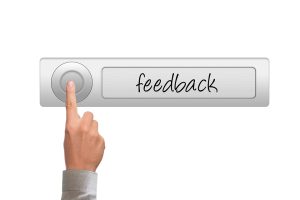Mastering Remote Marketing Team Management: Tips and Tricks for Success
With the rise of remote work, many companies have had to adapt to a new way of managing their employees. Especially in the marketing world, where collaboration is crucial, it can be challenging to keep a remote team on track. However, with the right strategies and tools, remote marketing team management can be successful. In this article, we’ll share some tips and tricks for mastering remote marketing team management.
H1: The Importance of Communication in Remote Team Management
One of the biggest challenges of managing a remote team is communication. Without face-to-face interactions, it can be easy to misinterpret messages or miss important details. That’s why it’s crucial to establish effective communication channels.
H2: Choose Communication Tools Wisely
There are many communication tools available, but not all are created equal. It’s essential to choose the tools that work best for your team’s needs. For example, instant messaging platforms like Slack or Microsoft Teams are great for quick conversations, while video conferencing tools like Zoom or Google Meet allow for face-to-face interactions.
H2: Set Communication Expectations
Once you have chosen your communication tools, it’s essential to set clear expectations for how and when your team will communicate. For example, you may establish that all team members must respond to messages within a certain timeframe or that all team meetings will be held at a specific time each week.
H1: Building Trust in a Remote Team
Without physical proximity, building trust can be challenging in a remote team. However, trust is essential for collaboration and productivity.
H2: Encourage Transparency
Encouraging transparency can help build trust among team members. This can include regular progress updates or sharing personal stories to help team members get to know each other better.
H2: Foster Collaboration
Collaboration is key to building trust in a remote team. Encourage team members to work on projects together or hold brainstorming sessions to foster collaboration and build trust.
H1: Managing Productivity in a Remote Team
Without the ability to check in on your team in person, it can be difficult to manage productivity in a remote team. However, there are strategies you can use to ensure that your team stays on task.
H2: Set Clear Goals and Deadlines
Setting clear goals and deadlines can help your team stay focused and motivated. Make sure that each team member understands their role in achieving these goals and that deadlines are reasonable and achievable.
H2: Use Project Management Tools
Project management tools like Asana, Trello, or Monday.com can be valuable in managing productivity in a remote team. These tools allow you to track tasks, deadlines, and progress in real-time.
H1: Balancing Flexibility and Accountability
One of the biggest benefits of remote work is the flexibility it offers. However, with that flexibility comes the need for accountability.
H2: Set Expectations for Availability
Make sure that all team members understand when they are expected to be available for work. This can include setting specific working hours or establishing times when team members must be reachable.
H2: Hold Regular Check-Ins
Regular check-ins can help keep team members accountable for their work. Schedule regular one-on-one meetings with each team member to discuss progress and offer support.
Conclusion
Remote work offers many benefits, but managing remote teams requires a different approach than managing in-person teams. By establishing effective communication channels, building trust, managing productivity, and balancing flexibility and accountability, remote marketing team management can be successful. Remember to adjust your strategies as needed to meet your team’s evolving needs and to ensure that your team is happy, engaged, and productive.
FAQs:
Q: What are the biggest challenges of managing a remote marketing team?
A: The biggest challenges of managing a remote marketing team include communication, building trust, managing productivity, and balancing flexibility and accountability.
Q: What are the best tools for communication in a remote marketing team?
A: The best tools for communication in a remote marketing team include instant messaging platforms like Slack or Microsoft Teams, and video conferencing tools like Zoom or Google Meet.
Q: How can I build trust in a remote team?
A: You can build trust in a remote team by encouraging transparency, fostering collaboration, and implementing team-building activities.
Q: How can I manage productivity in a remote team?
A: You can manage productivity in a remote team by setting clear goals and deadlines, using project management tools, and providing regular feedback and support.
Q: How can I balance flexibility and accountability in a remote team?
A: You can balance flexibility and accountability in a remote team by setting expectations for availability, holding regular check-ins, and establishing clear performance metrics.





